Hardware Labs Black Ice® SR2 240 MP Radiator Review
Since we published the most recent of the 360mm radiators for inclusion in the Extreme Rigs Rad Round Up 2015, we’ve kept busy conducting more radiator testing. However samples from various sponsors were arriving at different times and contained different sized radiators leaving us with a somewhat random collection of new data. Given that we strive to publish quality data driven reviews, we thought it better to hold off posting data on a single radiator in a certain size until we could compare it with test results from a same sized radiator.
The wait is over and with continued support from two of our regular sponsors, we can now publish reviews on what we believe will be 2 of the most popular 240mm radiators released this year.
In this review we’ll be taking a close look at the SR2 240 MP from Hardware Labs. We took a look a pre-production sample of the 360mm version for the round-up, so if the 360mm size is more your flavor be sure to check out it’s full review after you’re finished reading this one. We have wanted to check out the performance comparisons between radiator sizes, so in this review we’ll also compare some of the 240mm data vs. it’s 360mm sibling as well as results from the other 240mm radiator that we currently have.
Firstly a big thanks to Hardware Labs for providing the review sample of the SR2 240 MP!
What’s in the Box?
The SR2 240 MP sample arrived in full retail packaging. Existing packaging from the SR2 240 has been used, as the “MP MuiltiPort” labelling is a sticker which has been strategically placed on the front of the retail sleeve.
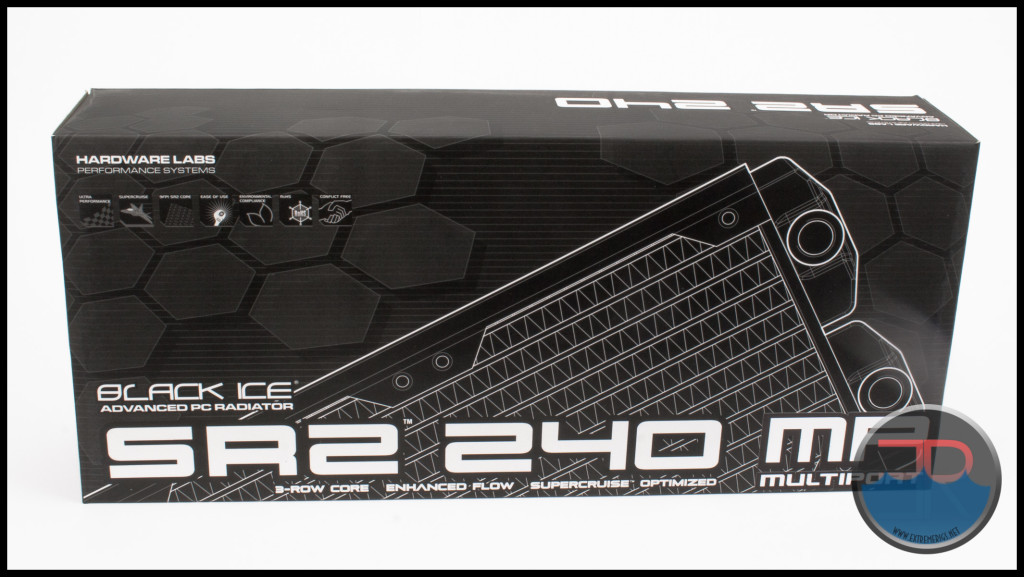 The front of the retail sleeve leaves us in no doubt as to what to expect, while on the back we find a tech drawing and some details on the SR2 240 radiator.
The front of the retail sleeve leaves us in no doubt as to what to expect, while on the back we find a tech drawing and some details on the SR2 240 radiator.
Note in the last sentence I said simply the SR2 240, and together with the sticker placement on the front, we conclude that the SR2 240 MP has exactly the same cooling package (core) as the single port version. HWLabs has confirmed this is correct, and the extra ports are the only changes in the MP version.
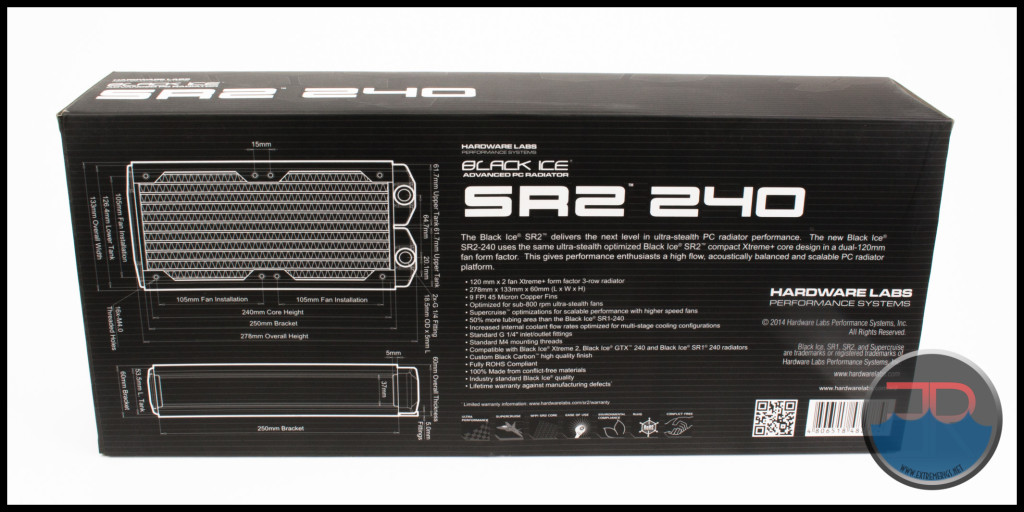 On one side we find some performance ratings on the various SR2 models.
On one side we find some performance ratings on the various SR2 models.
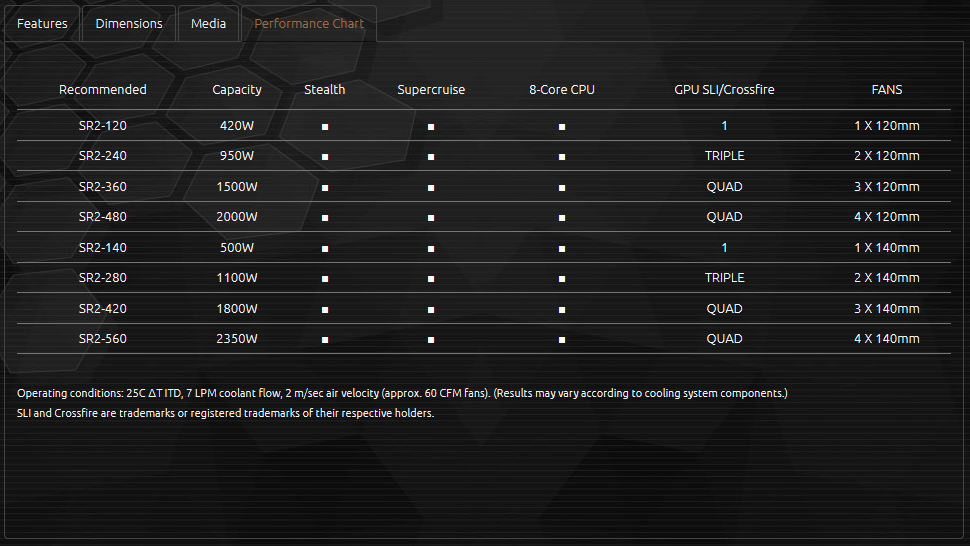
While we have no doubt the 950W result for the SR2 240 is valid for such a high delta, we really dislike the standardized test conditions used for this. While it may be useful for OEMs/vendors to compare it can be confusing for water cooling users as we generally like much lower temperature deltas.
Inside the outer retail sleeve is a protective cardboard box. The adhesive used to assemble the retail sleeve always seems to make it’s way onto the inner box making them extremely difficult to remove most of the time. This one ended up tearing:
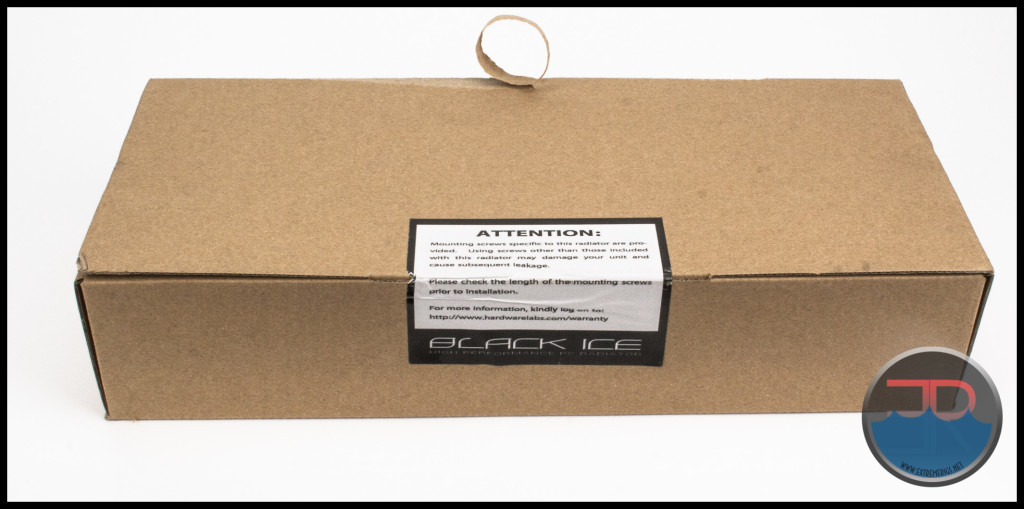 That small complaint aside, I really like the HWLabs style of boxing as the compartment at one end keeps the provided accessories away from the core. It would be nice to see a bubble wrap sleeve over the rad, but otherwise the SR2 MP has great packaging that should ensure safe arrival to the end user.
That small complaint aside, I really like the HWLabs style of boxing as the compartment at one end keeps the provided accessories away from the core. It would be nice to see a bubble wrap sleeve over the rad, but otherwise the SR2 MP has great packaging that should ensure safe arrival to the end user.
Under the flap on the right hand side, we found 3 bags with the supplied accessories.
Extent of delivery:
Included in the SR2 240 MP package is the following:
1 x SR2 Multi-Port Radiator
8 x M4 x 28mm screw s for mounting fans.
8 x M4 x 5mm screws for attaching to chassis
4 x G 1/4 port plugs.
Note that the 28mm screws are only just long enough to mount fans to the radiator. If using a mounting bracket, or placing fans between the chassis and rad, you will need to provide your own M4 screws of suitable length. In most instances M4 x 30 screws will be suitable.
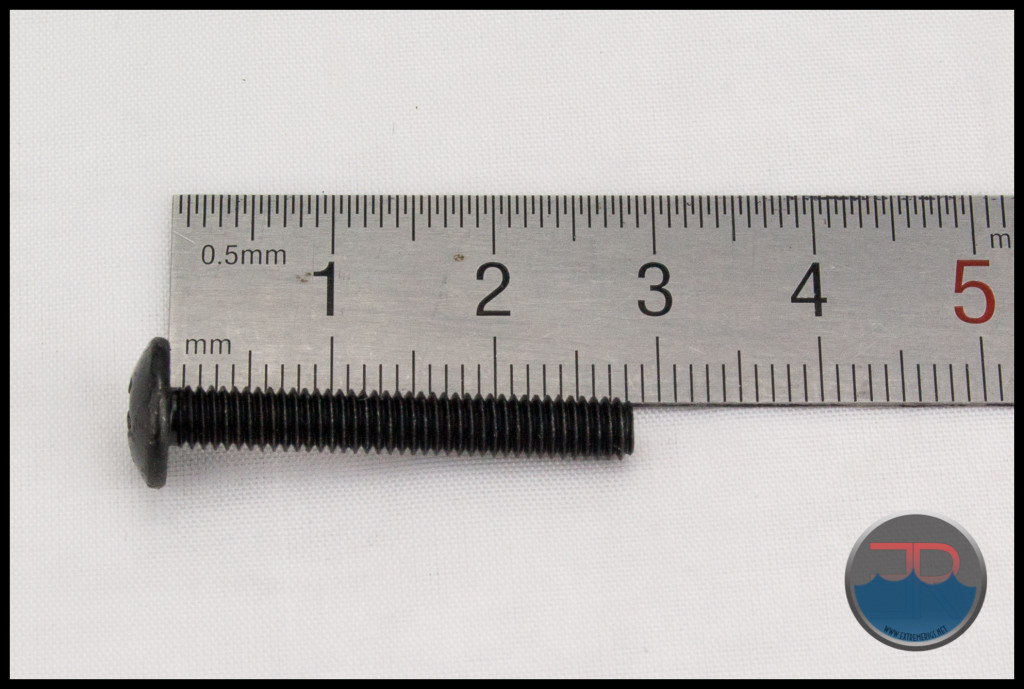 HWLabs also provides some spare port plugs aka stop fittings. 4 x extra port plugs come with the Multi-Port version of the SR2. These are in addition to 6 that are pre-installed into the ports of the radiator. This is great because the radiator is ready for flushing straight from the box. This means it comes with a total of 10 stop fittings, which is great, but somewhat overkill. Because of this HWLabs had to keep the cost down and so these are not made of brass but instead of POM aka Delrin. In other words they are plastic and if you note there is an allen key socket in the head for tightening it.
HWLabs also provides some spare port plugs aka stop fittings. 4 x extra port plugs come with the Multi-Port version of the SR2. These are in addition to 6 that are pre-installed into the ports of the radiator. This is great because the radiator is ready for flushing straight from the box. This means it comes with a total of 10 stop fittings, which is great, but somewhat overkill. Because of this HWLabs had to keep the cost down and so these are not made of brass but instead of POM aka Delrin. In other words they are plastic and if you note there is an allen key socket in the head for tightening it.
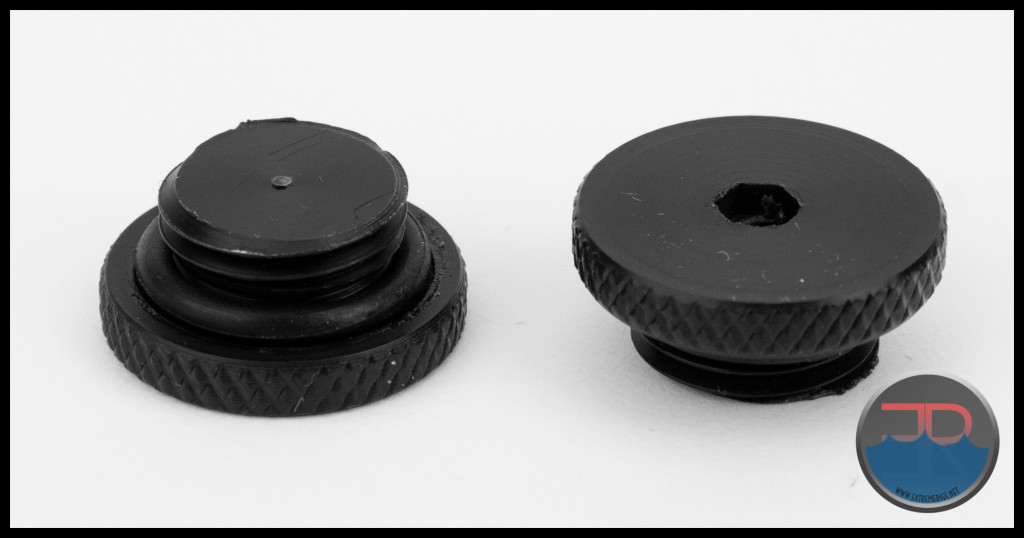 HWLabs recommends only using fingers to tighten because of this. However given that using an allen key is an optional method of tightening/loosening these plugs the recessed key hole will (and does) round off after a couple of uses. In fact some the plugs fitted on the rad were partially rounded off from the factory fitting straight from the box. Ultimately end users will decide whether or not they choose to replace these factory fitted plugs with plated/painted brass ones. I suspect that most will be happy to keep the stock plugs in place as they certainly are convincing and do look good. I think HWLabs made a good decision to include all the port plugs (inc. the 4 extra) and so the cost saving benefit of using the plastic material is justified.
HWLabs recommends only using fingers to tighten because of this. However given that using an allen key is an optional method of tightening/loosening these plugs the recessed key hole will (and does) round off after a couple of uses. In fact some the plugs fitted on the rad were partially rounded off from the factory fitting straight from the box. Ultimately end users will decide whether or not they choose to replace these factory fitted plugs with plated/painted brass ones. I suspect that most will be happy to keep the stock plugs in place as they certainly are convincing and do look good. I think HWLabs made a good decision to include all the port plugs (inc. the 4 extra) and so the cost saving benefit of using the plastic material is justified.
Onwards to technical specifications!








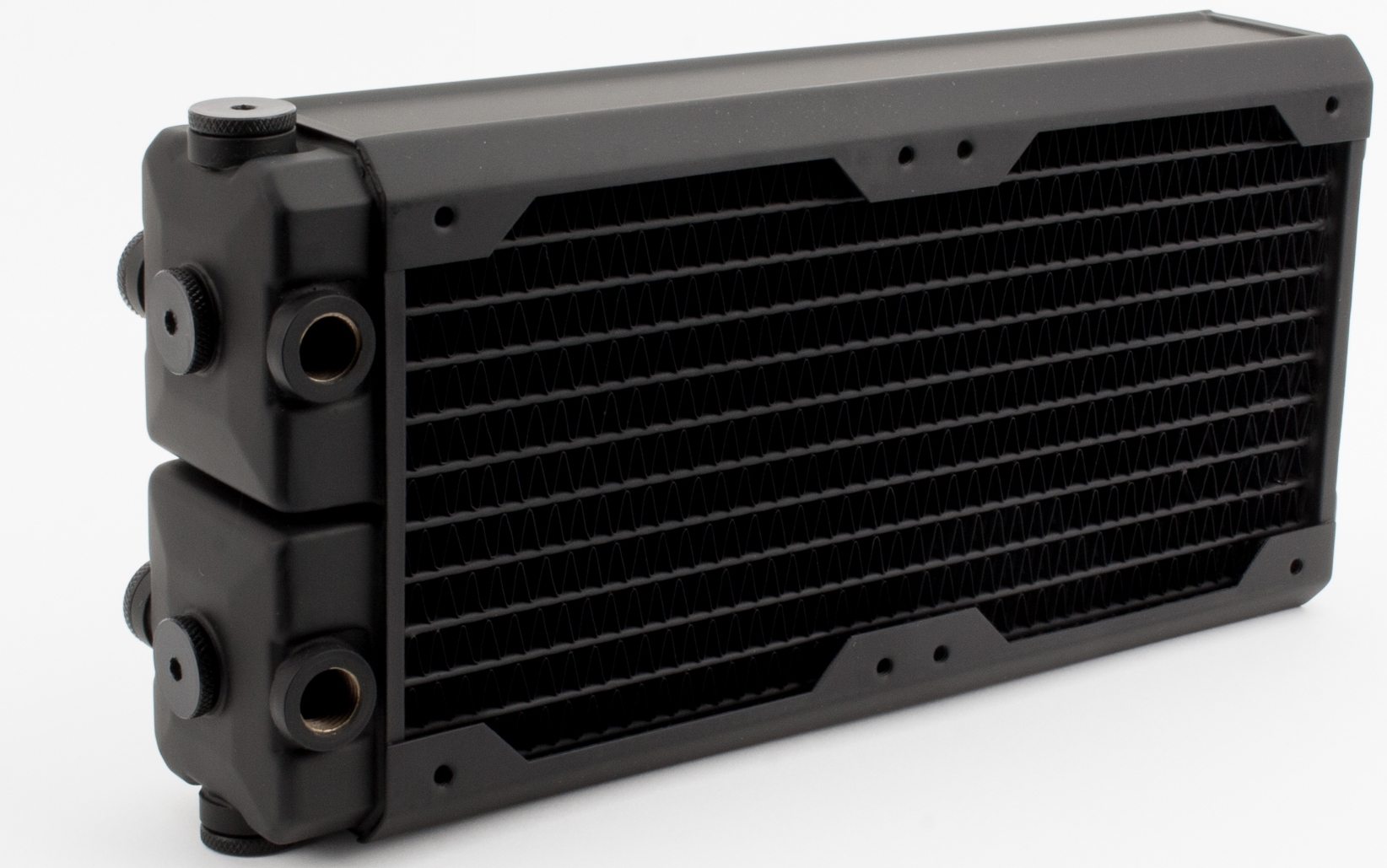
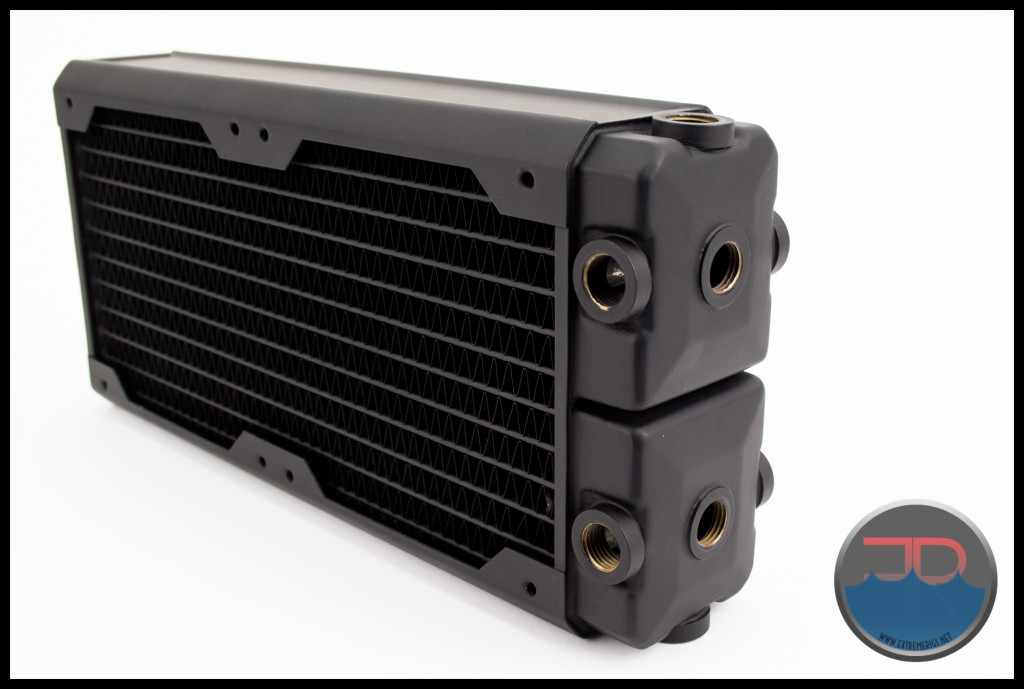
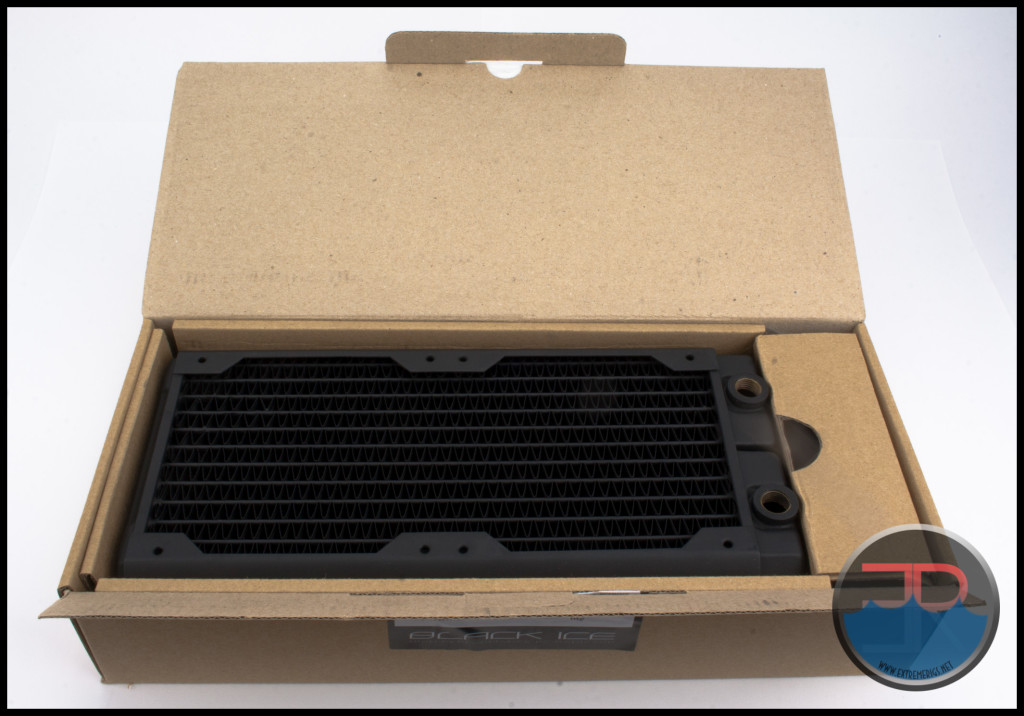
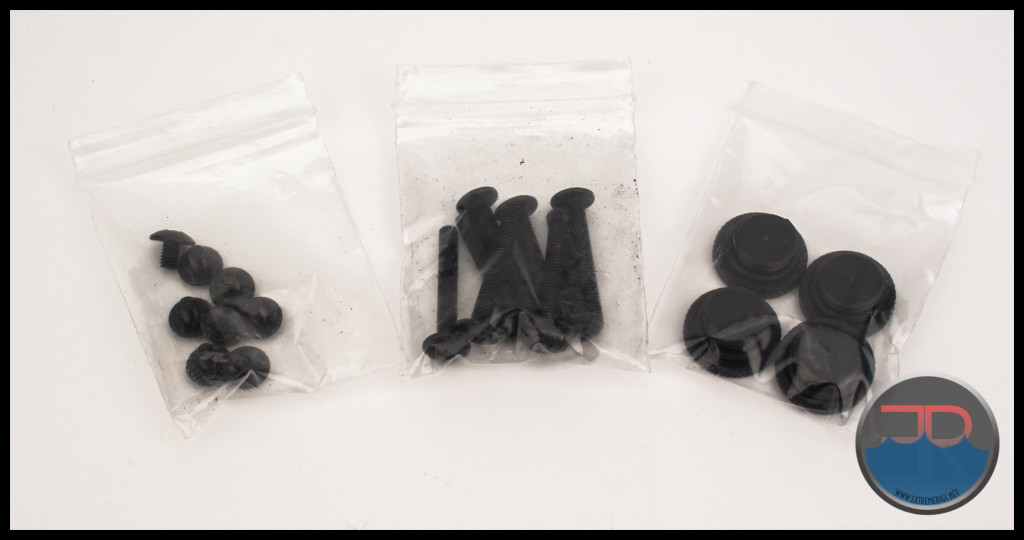
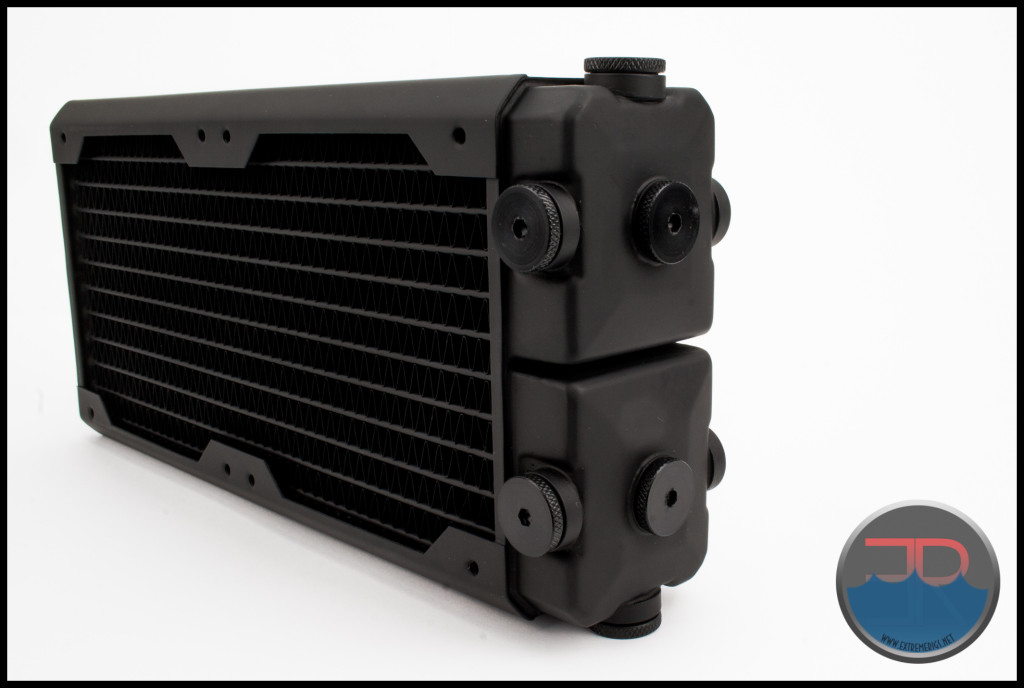




Maybe slightly disappointing thermal results, but not a deal breaker. Swarf in rad not a deal breaker either. Flexibility of ports, flexibility of use/fan rpms and overall quality mean that this is still a very good radiator. Again: great test. Now, please get more 240 results!
Often written or said in radiator reviews, “Since the XXX size of brand X radiator has shown XYZ level of performance, one should expect like performance from up-size XXX (or) down size XXX.” If the ratio of/comparable performance of the SR2 240 MP falls short of the SR2 360 MP, should we expect the 480 to provide an additional boost in performance over the 360 or similar performance to the 360? Given what the test results of the 240 tell us, how can an answer to either possibility be justified?
Not sure quite what you’re trying to say Questors – can you explain again?
The 240 performs at about 70% of a 360 when using an equal heatload. However it is running more efficiently as an equal heatload equates to a higher delta T. The 240 *should* of course be 66% of the the 360 and I do believe that it would give us that result if we kept a constant delta T instead of a constant heatload.
So to answer the question – should the 480 provide an additional performance boost over the 360? Absolutely – yes it should. As to how much – we would expect the ideal 33% more cooling ability when measuring a constant delta T, however for a constant heatload you would some efficiency because the delta T would be lower. So to guess – somewhere between 25-30% better cooling.
Does that answer the question?
This was the basis for me asking the question: “However, the thermal Test conditions did not favor the 240mm variant quite as well as the 360mm. The consistency was still there but performance was weaker when compared to the same competitor.”
To me this meant the performance of the SR 240 vs the XE 240 was less proportionate to the SR2 360 results against the XE 360.
Your response clears things up for me – “a constant delta T instead of a constant heatload”
[…] EK XE 240 Radiator Hardware Labs SR2 240 Radiator […]
Comments are closed.